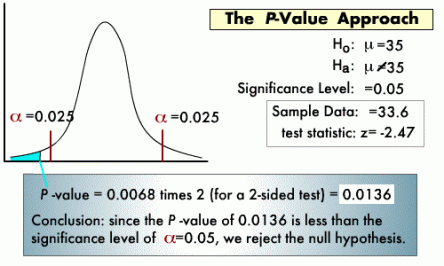P – The $ixteenth Letter Of The English Alphabet
P, p
[pee]
noun, plural P’s or Ps, p’s or ps.
1. the sixteenth letter of the English alphabet, a consonant.2. any spoken sound represented by the letter P or p, as in pet, supper, top, etc.
3. something having the shape of a P .
4. a written or printed representation of the letter P or p.
5. a device, as a printer’s type, for reproducing the letter P or p.
P Value (Economics)
Definition: P value is associated with a test statistic. It is “the probability, if the test statistic really were distributed as it would be under the null hypothesis, of observing a test statistic [as extreme as, or more extreme than] the one actually observed.”
The smaller the P value, the more strongly the test rejects the null hypothesis, that is, the hypothesis being tested.
A p-value of .05 or less rejects the null hypothesis “at the 5% level” that is, the statistical assumptions used imply that only 5% of the time would the supposed statistical process produce a finding this extreme if the null hypothesis were true.
5% and 10% are common significance levels to which p-values are compared.
Source: http://economics.about.com/od/termsbeginningwithp/g/pvaluedef.htm
A different (p)erspective to consider.



